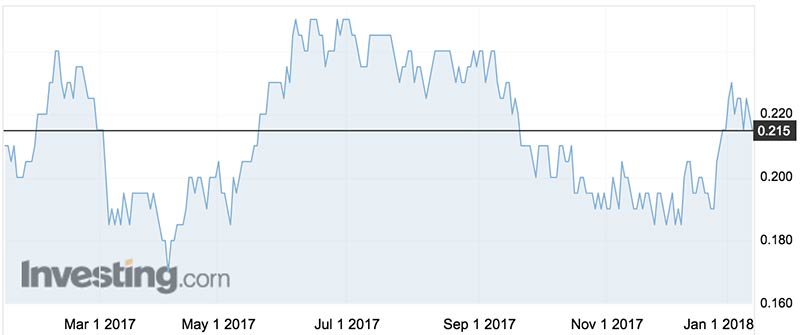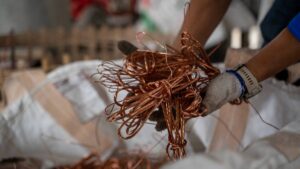Why good times are ahead for small ASX gold miners like Pantoro

Pic: Tyler Stableford / Stone via Getty Images
Share price growth among small ASX-listed gold producers looks set to be a key early trend in 2018, writes Barry FitzGerald in his weekly Garimpeiro column.
It has been a couple of big months for gold producers — with 15 per cent share price gains notched up by the established names as gold prices start knocking on the door of $1700.
But the share price strength has prompted calls that without the gold price moving higher still, the established producers are now on the expensive side of things.
The good news is that the buoyant times for gold producers — the price in Australian dollars is up by $60 an ounce in the last three months to $1690 an ounce — has yet to filter down to the smaller, lesser-known gold producers.
But it’s starting to happen and it looks like shaping up as key early trend in gold equities in 2018.
Investors are no longer cold-shouldering the small producers, stepping up the search for those names which have yet to be re-rated in response to gold’s price strength.
One name to pop up is Pantoro (ASX:PNR) which has been quietly making a name for itself from its Halls Creek project in the remote East Kimberley region of Western Australia, far from the madding crowd of WA’s Eastern Goldfields way down south.

Others have had a go at gold production in the Halls Creek region over the years with little or no success. But since it began production in the September quarter of 2015, Pantoro has posted 10 consecutive quarterly production increases.
It has established itself as a 50,000 ounce-a-year producer from the Nicolsons and Wagtail mines and is planning a low-cost ramp up in output to 80,000 ounces annually.
To date at least, the market has been looking the other way, with Pantoro shares falling from 24c at the end of September last year to 21.5c last week. It’s got 783.5 million ordinary shares out there so its market cap is not particularly small at $169 million.
But when compared to the bigger name producers, the market value is on the mean side of things for a 50,000 ounce-a-year producer on its way to 80,000 ounces-a-year.
Robust costs of production
What’s more, the high-grade nature of Pantoro’s operation has helped it achieve robust costs of production. In the September quarter last year, the all-in sustaining cost (AISC) of production for 13,282 ounces was $1019 an ounce.
Pantoro has yet to announce its AISC performance for the subsequent December quarter. That will be done later this last month. But last week it did release selected highlights of its performance for the period, a good indication it is pretty pleased.
Production for the December quarter has been higher than the preceding September quarter at 13,841 ounces, with the processing plant continuing to operate “reliably at increased production rates.”
Bell Potter analyst David Coates has placed a 31c share price target on Pantoro after noting that its share price had yet to respond to the gold price rise — or the company’s achievements on a number of fronts.
He said the share price weakness was despite increasing production, falling costs, a strengthening balance sheet, and ongoing drilling results pointing to further resource growth and mine life extensions.
“Furthermore, successful testing of ore sorting technology is now going to enable expansion of production to 80,000 ounces-a-year for capex of about $2 million (previously estimated at $10 million), offering an extremely value-accretive growth option,’’ Coates said.
The ore sorter rejects 30 to 60 per cent of the material that would otherwise have gone through the treatment plant.
The beauty of the technology is that the head grade of the mined material increases, meaning gold production levels are maintained for much lower costs. It also means that additional feed can go to the plant, which initially for Pantoro, will come from stockpiled low-grade material.
UNLOCK INSIGHTS
Discover the untold stories of emerging ASX stocks.
Daily news and expert analysis, it's free to subscribe.
By proceeding, you confirm you understand that we handle personal information in accordance with our Privacy Policy.








